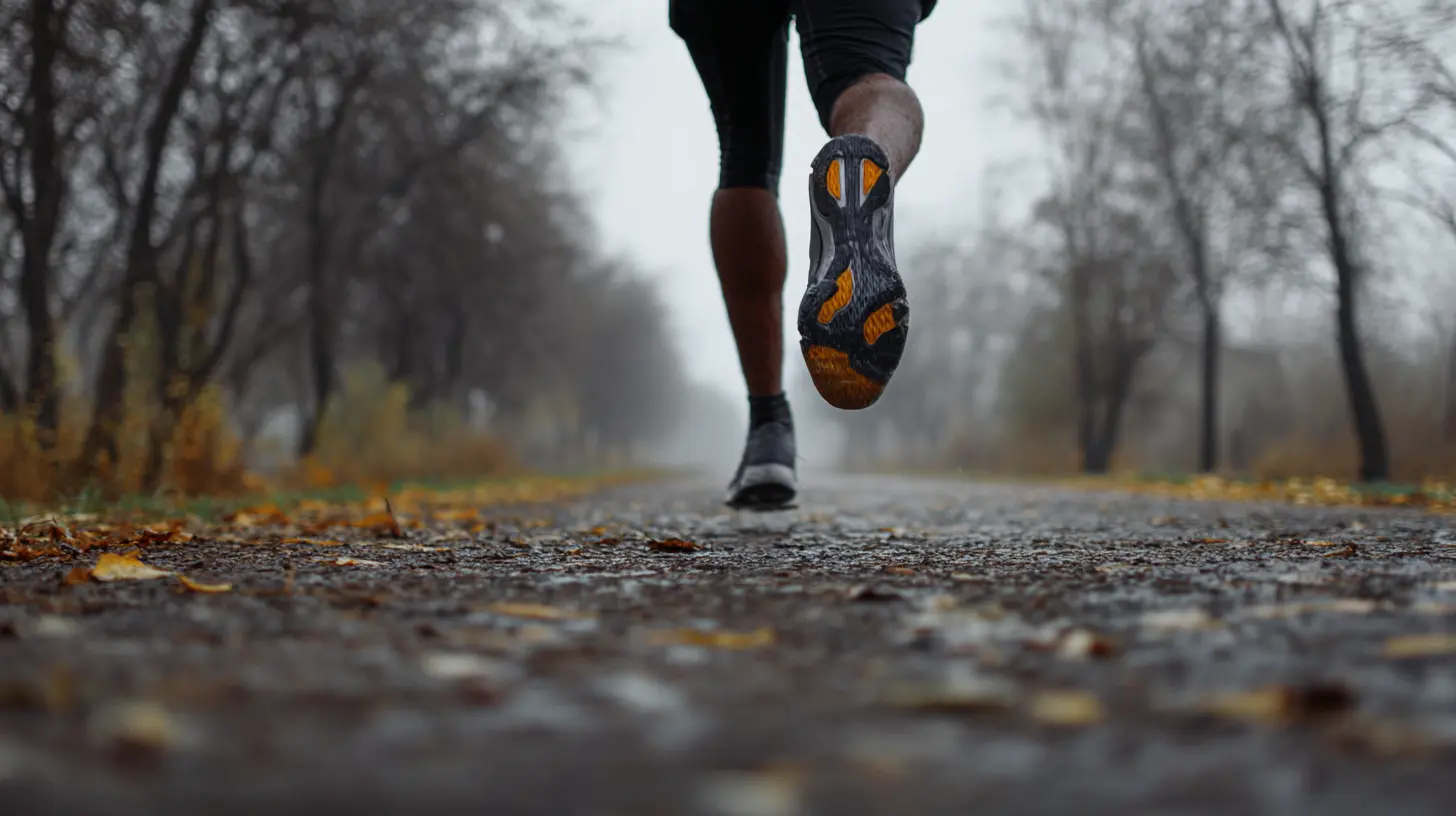
Running Cadence: The Key to Efficient Marathon Performance
Learn what running cadence is, why it matters for marathon performance, and how to optimize your step rate for efficiency and injury prevention.
Running Cadence: The Key to Efficient Marathon Performance
Running cadence, also known as step rate or stride frequency, is the number of steps you take per minute while running. Typically measured as total steps per minute or steps per minute for one leg, cadence has emerged as a critical metric for marathon performance, running economy, and injury prevention. Understanding and optimizing your cadence can significantly impact your training effectiveness and race-day results.
What Is Running Cadence?
Cadence is expressed in steps per minute (spm) and is calculated by counting the total number of foot strikes in 60 seconds. For example, if both feet strike the ground 90 times each in one minute, your cadence is 180 spm. This metric reflects the tempo of your running gait and works inversely with stride length: higher cadence typically means shorter, quicker steps, while lower cadence indicates longer, slower strides.
The relationship between cadence, stride length, and running speed can be expressed as: Speed = Cadence × Stride Length
The Science Behind Optimal Cadence
Research since the 1980s has identified 180 steps per minute as a benchmark for efficient running. Exercise physiologist Jack Daniels first observed that elite distance runners during the 1984 Olympics maintained cadences rarely dropping below 180 spm, even at slower paces. Subsequent biomechanical studies have validated this range for several reasons:
-
Reduced Impact Forces Higher cadence reduces vertical oscillation (bounce) and ground contact time, decreasing the peak impact forces transmitted through joints. Studies show that increasing cadence by 5-10% can reduce loading rates on the knees and hips by up to 20%, potentially lowering injury risk.
-
Improved Running Economy A moderate increase in cadence (within 5-10% of your natural rate) can enhance running economy—the oxygen cost of running at a given pace. This occurs because shorter, quicker steps optimize energy return from tendons and reduce braking forces during foot strike.
-
Better Gait Mechanics Higher cadence naturally promotes a midfoot or forefoot strike pattern and encourages landing with the foot closer to your center of mass, reducing overstriding. Overstriding creates excessive braking forces and increases injury susceptibility.
-
Enhanced Neuromuscular Coordination Training at varied cadences develops neuromuscular efficiency, helping your body automatically select the most economical stride pattern at different speeds.
Why Cadence Matters for Marathoners
-
Energy Conservation Marathon running demands sustained effort over 26.2 miles. Inefficient gait mechanics waste energy through excessive vertical movement, overstriding, and prolonged ground contact. An optimized cadence minimizes these inefficiencies, conserving energy for later miles.
-
Injury Prevention Common running injuries—runner's knee, IT band syndrome, shin splints, and stress fractures—often stem from excessive impact forces and poor biomechanics. Maintaining appropriate cadence reduces these injury risk factors, keeping you healthy throughout training cycles.
-
Fatigue Management As fatigue accumulates during a marathon, runners often unconsciously slow their cadence and overstride. Practicing cadence awareness during training prepares you to maintain efficient mechanics even when tired, preserving pace and reducing late-race slowdown.
-
Pace Flexibility Understanding your cadence at different intensities allows you to adjust effort more precisely during workouts and races. You can increase speed by lengthening stride slightly while maintaining cadence, or by increasing cadence while keeping stride length constant.
Finding Your Optimal Cadence
While 180 spm is often cited as the "magic number," optimal cadence varies based on individual biomechanics, height, leg length, and running speed. Recent research suggests the ideal range is broader, typically between 170-190 spm for distance running.
How to Measure Your Current Cadence
-
Manual Count During an easy run, count how many times one foot strikes the ground in 30 seconds, then multiply by 4.
-
GPS Watch or Running App Most modern running watches and smartphone apps include cadence tracking via built-in accelerometers.
-
Foot Pod or Sensor Dedicated running sensors provide highly accurate real-time cadence data.
Assessing Your Cadence
- Below 160 spm: Likely overstriding with potential for high impact forces
- 160-170 spm: Room for improvement, especially if you experience frequent injuries
- 170-180 spm: Good range for most recreational marathoners
- 180-190 spm: Optimal for many distance runners
- Above 190 spm: Efficient for some runners, but may indicate overly short strides requiring excessive leg turnover
Strategies to Improve Cadence
1. Gradual Adjustment
Don't dramatically change your cadence overnight. Aim to increase by 5% (typically 5-10 steps per minute) over several weeks. Sudden changes can strain muscles and tendons unaccustomed to different loading patterns.
Example Progression:
- Weeks 1-3: Current cadence + 5 spm for 10-15 minutes during easy runs
- Weeks 4-6: New cadence for 20-30 minutes
- Weeks 7-9: Maintain new cadence for majority of easy runs
- Reassess and repeat if further adjustment needed
2. Metronome Training
Use a metronome app or music with specific beats per minute (BPM) matching your target cadence. Run in sync with the beat for designated portions of workouts.
Workout Example:
- Warm-up: 10 minutes at natural cadence
- Main set: 4 × 5 minutes at target cadence (180 spm) with 2-minute natural cadence recovery
- Cool-down: 10 minutes at natural cadence
3. Form Drills
Incorporate high-cadence drills that reinforce quick turnover:
- Fast feet drill: 20-30 seconds of very quick, short steps in place
- High knees: 30-second intervals focusing on rapid leg cycling
- Butt kicks: 30-second intervals emphasizing quick hamstring contraction
- Strides: 6-8 × 100m at 5K pace with focus on quick, light steps
4. Downhill Running
Gentle downhill running naturally increases cadence while reducing impact. Use downhill sections to practice higher turnover without forcing it.
5. Focus on Cues
Mental cues help retrain gait patterns:
- "Quick feet" or "light and fast"
- "Land under your hips"
- "Minimize ground contact time"
- Imagine running on hot coals or thin ice
6. Video Analysis
Record yourself running from the side. Check for overstriding (foot landing well ahead of your body) and excessive vertical bounce. Compare foot strike position and body posture at different cadences.
Integrating Cadence Training into Marathon Preparation
Base Phase (12-16 Weeks Out)
Focus on establishing awareness and making gradual adjustments:
- Measure baseline cadence across various paces
- Introduce metronome runs once weekly (10-15 minutes)
- Perform form drills 2-3 times per week
- Keep changes subtle to avoid injury
Build Phase (8-12 Weeks Out)
Expand cadence work across different workout types:
- Practice target cadence during tempo runs and long runs
- Use cadence as a feedback tool during intervals (higher intensity should naturally increase cadence slightly)
- Aim for consistent cadence across 50-75% of weekly mileage
Peak Phase (4-8 Weeks Out)
Reinforce cadence consistency at race pace:
- Marathon pace runs should dial in your race-day cadence (typically 175-185 spm)
- Practice maintaining cadence when fatigued during final miles of long runs
- Use cadence monitoring during tune-up races
Taper Phase (2-3 Weeks Out)
Maintain but don't force cadence work:
- Trust your training; your body has adapted to efficient mechanics
- Use cadence as a check-in during short race-pace efforts
- Focus on feeling light, quick, and controlled
Common Mistakes to Avoid
-
Forcing Unnaturally High Cadence If 190 spm feels awkward and exhausting, it may not be optimal for your biomechanics. Work within a comfortable range.
-
Ignoring Stride Length Cadence alone doesn't determine speed. Don't sacrifice natural stride length by taking excessively short, choppy steps.
-
Only Focusing on Cadence Running form is multifaceted. Also address posture, arm swing, core engagement, and breathing patterns.
-
Neglecting Strength Training Higher cadence requires greater leg turnover power. Supplement with strength work targeting glutes, hamstrings, and calves.
-
Inconsistent Practice Sporadic cadence work won't create lasting change. Integrate it regularly throughout your training cycle.
Cadence Variations by Workout Type
Different training paces naturally produce different cadences:
- Easy Runs: 165-175 spm (relaxed, comfortable turnover)
- Marathon Pace: 175-185 spm (efficient, sustainable rhythm)
- Tempo/Threshold: 180-190 spm (controlled, purposeful turnover)
- Intervals (5K-10K pace): 185-195+ spm (quick, powerful strides)
These ranges vary individually, but the pattern holds: faster paces typically require higher cadence, achieved through both increased turnover and slightly longer strides.
Real-World Application: Race Day Strategy
On marathon race day, use cadence as a pacing and form check:
Miles 1-6 (Start): Monitor cadence to avoid starting too fast. Excitement often causes over-striding and bouncy running. Aim for your practiced race cadence (typically 175-185 spm) and trust it.
Miles 7-20 (Middle): Check cadence every few miles to ensure consistency. If it drops, focus on quick feet cues before you slow down significantly.
Miles 21-26.2 (Finish): Fatigue naturally reduces cadence. Actively maintain turnover even if stride length shortens. Mental cues like "light and quick" can help preserve form when energy wanes.
Key Takeaways
Running cadence is a powerful, modifiable factor in marathon performance. By understanding the science behind optimal step rate and gradually implementing cadence training, you can improve running economy, reduce injury risk, and conserve energy for faster, more sustainable marathon racing. While 180 spm serves as a useful benchmark, your optimal cadence depends on individual biomechanics and training goals. Measure your baseline, make incremental adjustments, practice consistently across all training paces, and use cadence as one component of comprehensive running form improvement. With patience and attention to this often-overlooked metric, you'll develop more efficient, resilient running mechanics that carry you smoothly through 26.2 miles.


